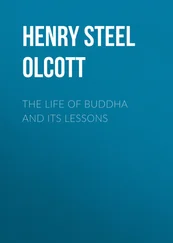William Bryan - The Old World and Its Ways
Здесь есть возможность читать онлайн «William Bryan - The Old World and Its Ways» — ознакомительный отрывок электронной книги совершенно бесплатно, а после прочтения отрывка купить полную версию. В некоторых случаях можно слушать аудио, скачать через торрент в формате fb2 и присутствует краткое содержание. Жанр: foreign_antique, foreign_prose, на английском языке. Описание произведения, (предисловие) а так же отзывы посетителей доступны на портале библиотеки ЛибКат.
- Название:The Old World and Its Ways
- Автор:
- Жанр:
- Год:неизвестен
- ISBN:нет данных
- Рейтинг книги:4 / 5. Голосов: 1
-
Избранное:Добавить в избранное
- Отзывы:
-
Ваша оценка:
- 80
- 1
- 2
- 3
- 4
- 5
The Old World and Its Ways: краткое содержание, описание и аннотация
Предлагаем к чтению аннотацию, описание, краткое содержание или предисловие (зависит от того, что написал сам автор книги «The Old World and Its Ways»). Если вы не нашли необходимую информацию о книге — напишите в комментариях, мы постараемся отыскать её.
The Old World and Its Ways — читать онлайн ознакомительный отрывок
Ниже представлен текст книги, разбитый по страницам. Система сохранения места последней прочитанной страницы, позволяет с удобством читать онлайн бесплатно книгу «The Old World and Its Ways», без необходимости каждый раз заново искать на чём Вы остановились. Поставьте закладку, и сможете в любой момент перейти на страницу, на которой закончили чтение.
Интервал:
Закладка:
The stature of the Japanese is below that of the citizens of the United States and northern Europe. The average height of the men in the army is about five feet two inches, and the average weight between a hundred and twenty and a hundred and thirty pounds. It looks like burlesque opera to see, as one does occasionally, two or three little Japanese soldiers guarding a group of big burly Russian prisoners.
The opinion is quite general that the habit which the Japanese form from infancy of sitting on the floor with their feet under them, tends to shorten the lower limbs. In all the schools the children are now required to sit upon benches and whether from this cause or some other, the average height of the males, as shown by yearly medical examination, is gradually increasing. Although undersize, the people are sturdy and muscular and have the appearance of robust health. In color they display all shades of brown, from a very light to a very dark. While the oblique eye is common, it is by no means universal.
The conveyance which is most popular is the jinrikisha, a narrow seated, two wheeled top buggy with shafts, joined with a cross piece at the end. These are drawn by "rikisha men" of whom there are several hundred thousand in the empire. The 'rikisha was invented by a Methodist missionary some thirty years ago and at once sprang into popularity. When the passenger is much above average weight, or when the journey is over a hilly road, a pusher is employed and in extraordinary cases two pushers. It is astonishing what speed these men can make. One of the governors informed me that 'rikisha men sometimes cover seventy-five miles of level road in a day. They will take up a slow trot and travel for several miles without a break. We had occasion to go to a village fifteen miles from Kagoshima and crossed a low mountain range of perhaps two thousand feet. The trip each way occupied about four hours; each 'rikisha had two pushers and the men had three hours rest at noon. They felt so fresh at the end of the trip that they came an hour later to take us to a dinner engagement. In the mountainous regions the chair and kago take the place of the 'rikisha. The chair rests on two bamboo poles and is carried by four men; the kago is suspended from one pole, like a swinging hammock, and is carried by two. Of the two, the chair is much the more comfortable for the tourist. The basha is a small one-horse omnibus which will hold four or six small people; it is used as a sort of stage between villages. A large part of the hauling of merchandise is done by men, horses being rarely seen. In fact, in some of the cities there are more oxen than horses, and many of them wear straw sandals to protect their hoofs from the hard pavement. The lighter burdens are carried in buckets or baskets, suspended from the ends of a pole and balanced upon the shoulder.
In the country the demand for land is so great that most of the roads are too narrow for any other vehicle than a hand cart. The highways connecting the cities and principal towns, however, are of good width, are substantially constructed and well drained, and have massive stone bridges spanning the streams.
The clothing of the men presents an interesting variety. In official circles the European and American dress prevails. The silk hat and Prince Albert coat are in evidence at all day functions, and the dress suit at evening parties. The western style of dress is also worn by many business men, professional men and soldiers, and by students after they reach the middle school, which corresponds to our high school. The change is taking place more rapidly among the young than among the adults and is more marked in the city than in the country. In one of the primary schools in Kyoto, I noticed that more than half of the children gave evidence of the transition in dress. The change is also more noticeable in the seaport cities than in the interior. At Kyoto, an inland city, the audience wore the native dress and all were seated on mats on the floor, while the next night at Osaka, a seaport, all sat on chairs and nearly all wore the American dress. At the Osaka meeting some forty Japanese young ladies from the Congregational college sang "My Country 'Tis of Thee" in English.
The shopkeepers and clerks generally wear the native clothing, which consists of a divided skirt and a short kimono held in place by a sash. The laboring men wear loose knee breeches and a shirt in warm weather; in cold weather they wear tight fitting breeches that reach to the ankles and a loose coat. In the country the summer clothing is even more scanty. I saw a number of men working in the field with nothing on but a cloth about the loins, and it was early in November, when I found a light overcoat comfortable.
A pipe in a wooden case and a tobacco pouch are often carried in the belt or sash, for smoking is almost universal among both men and women.
Considerable latitude is allowed in footwear. The leather shoe has kept pace with the coat and vest, but where the native dress is worn, the sandal is almost always used. Among the well-to-do the foot is encased in a short sock made of white cotton cloth, which is kept scrupulously clean. The sock has a separate division for the great toe, the sandal being held upon the foot by a cord which runs between the first and second toes and, dividing, fastens on each side of the sandal. These sandals are of wood and rest upon two blocks an inch or more high, the front one sloping toward the toe. The sandal hangs loosely upon the foot and drags upon the pavement with each step. The noise made by a crowd at a railroad station rises above the roar of the train. In muddy weather a higher sandal is used which raises the feet three or four inches from the ground, and the wearers stalk about as if on stilts. The day laborers wear a cheaper sandal made of woven rope or straw. The footwear above described comes down from time immemorial, but there is coming into use among the 'rikisha men a modern kind of footwear which is a compromise between the new and the old. It is a dark cloth, low-topped gaiter with a rubber sole and no heel. These have the separate pocket for the great toe. The sandals are left at the door. At public meetings in Japanese halls the same custom is followed, the sandals being checked at the door as hats and wraps are in our country. On approaching a meeting place the speaker can form some estimate of the size of the audience by the size of the piles of sandals on the outside. After taking cold twice, I procured a pair of felt slippers and carried them with me, and the other members of the family did likewise.
The women still retain the primitive dress. About 1884 an attempt was made by the ladies of the court to adopt the European dress and quite a number of women in official circles purchased gowns in London, Paris and the United States, in spite of the protests of their sisters abroad. (Mrs. Cleveland joined in a written remonstrance which was sent from the United States.) But the spell was broken in a very few months and the women outside of the court circles returned to the simpler and more becoming native garb. It is not necessary to enter into details regarding the female toilet, as the magazines have made the world familiar with the wide sleeved, loose fitting kimono with its convenient pockets. The children wear bright colors, but the adults adopt more quiet shades.
The shape of the garment never changes, but the color does. This season grey has been the correct shade. Feminine pride shows itself in the obi, a broad sash or belt tied in a very stiff and incomprehensible bow at the back. The material used for the obi is often bright in color and of rich and expensive brocades. A wooden disc is often concealed within the bow of the obi to keep it in shape and also to brace the back. Two neck cloths are usually worn, folded inside the kimono to protect the bare throat. These harmonize with the obi in color and give a dainty finish to the costume. As the kimono is quite narrow in the skirt, the women take very short steps. This short step, coupled with the dragging of the sandals, makes the women's gait quite unlike the free stride of the American woman. In the middle and higher schools the girls wear a pleated skirt over the kimono. These are uniform for each school and wine color is the shade now prevailing. The men and women of the same class wear practically the same kind of shoes.
Читать дальшеИнтервал:
Закладка:
Похожие книги на «The Old World and Its Ways»
Представляем Вашему вниманию похожие книги на «The Old World and Its Ways» списком для выбора. Мы отобрали схожую по названию и смыслу литературу в надежде предоставить читателям больше вариантов отыскать новые, интересные, ещё непрочитанные произведения.
Обсуждение, отзывы о книге «The Old World and Its Ways» и просто собственные мнения читателей. Оставьте ваши комментарии, напишите, что Вы думаете о произведении, его смысле или главных героях. Укажите что конкретно понравилось, а что нет, и почему Вы так считаете.












